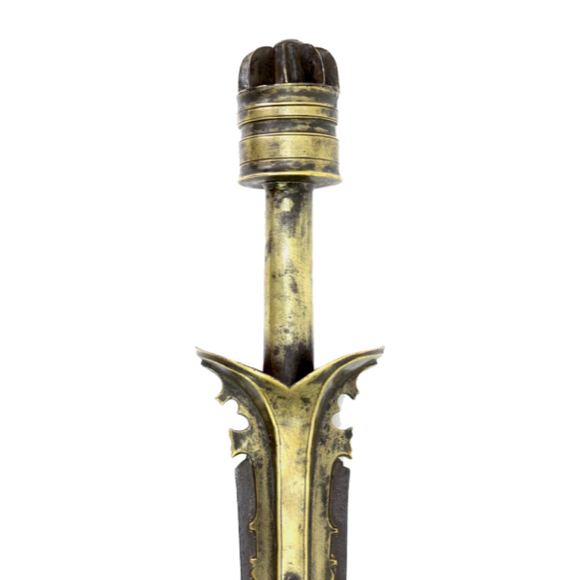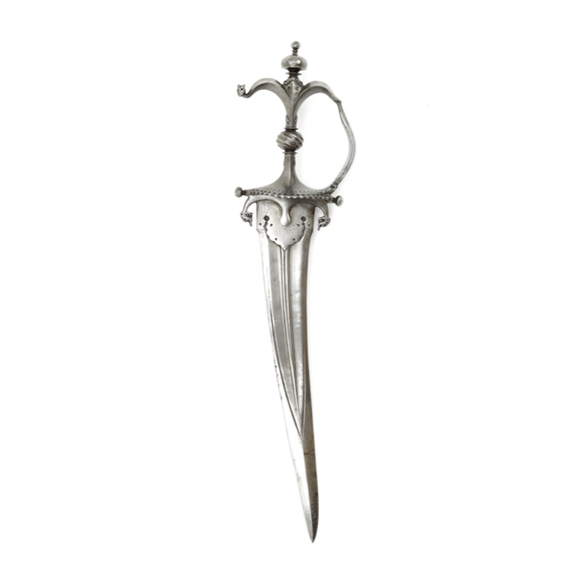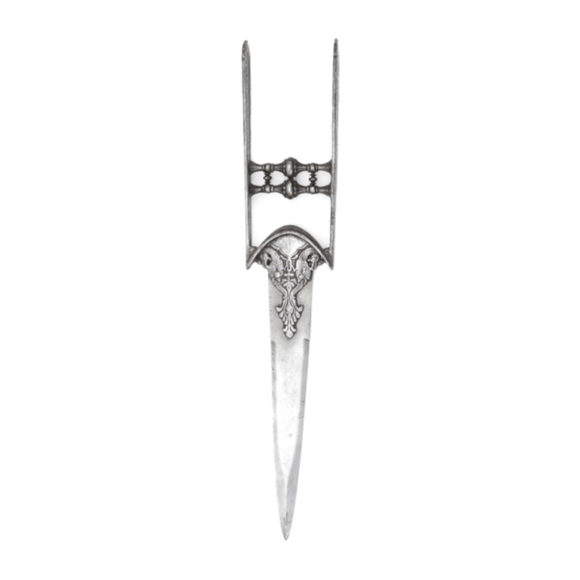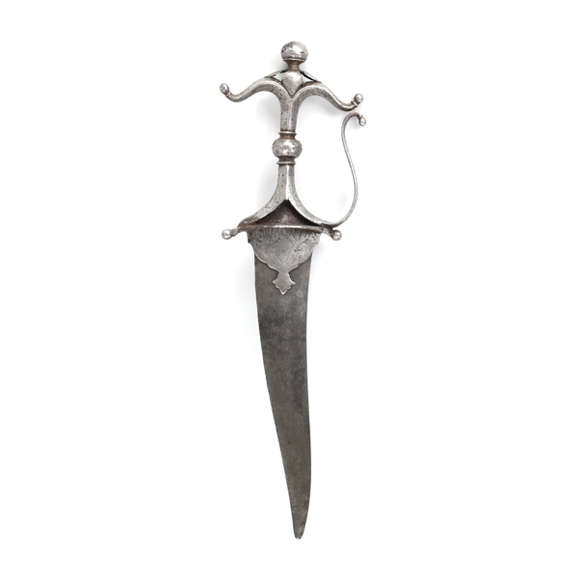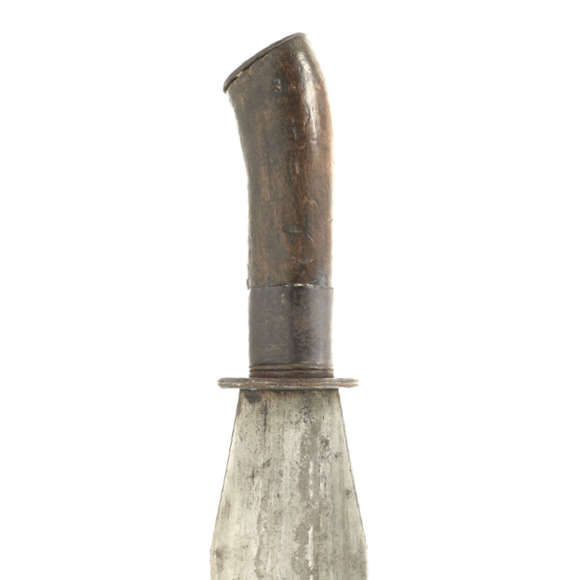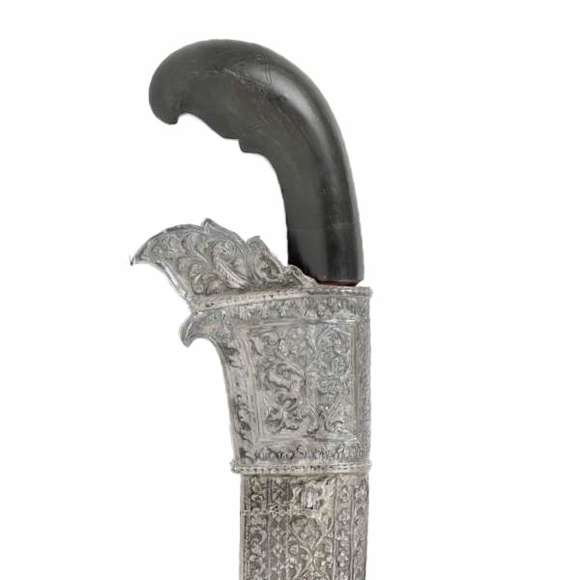An early fighting piece with strong reinforcing langet and broad, cobra shaped tip.

69 cm
53 cm
Base 5 mm
Middle 3.5 mm
5 cm from tip 2 mm
Base 46.5 mm
Middle 43 mm
5 cm from tip 36.5 mm
1090 grams
6 cm from guard
South India, Kerala or Tamil Nadu
Iron/steel, bronze
16th century or earlier
Introduction
Swords like this are often called "Nair temple sword" because they are still found and used ceremonially in Nair temples up until this day. The Nair were the warrior caste of the Tamil people and the swords used are based on actual military swords used in earlier times.
Swords with a recurved blade appear in India quite early, probably modeled after the kopis sword carried by Alexander the Great and his armies. They remained in use for well well over one and a half thousand years, being one of the primary sword types used until at least the Vijayanagara empire that lasted from 1336-1646.
Vijayanagara defeat at the hands of the allied Deccan sultanates, primarily after the Battle of Talikota of 1565, gradually started the replacement of traditional south Indian recurved swords to northern style, curved talwar swords.
Description
An interesting fighting example that probably dates from the 16th century or earlier. It has a forge folded, recurved blade with a very wide and shallow fuller following the contour of the spine.
There is a small protrusion on the spine which is seen on a number of similar swords, among which Metropolitan Museum accession number 36.25.1583 and Victoria & Albert Museum accession number IM16-1924, both published by Elgood, and also seen on catalog numbers C34, C39, C91, C92, C94 and C95 of the Roy Elvis collection.
The blade's contour shows earlier damage was polished out towards the tip, indicative of active service.
The guard is cast from a single piece of bronze, including long langets between which the blade is held. Further stability, and not unimportantly, a cobra-like appearance, is provided by ribs with thickened wavy edges. The quatrefoil guard is decorated with four rings, chakra. Such hilts appear from at least the Chola dynasty.1
The grip section is a simple bronze cylinder around the iron full tang. The pommel consists of a square cushion-like piece, with two rings above it. The rings contain pieces of metal so they make a jingling sound when the sword is moved. The end of the tang is peened over a bud-shaped finial.
Conclusion
An interesting example of an early south Indian battle scarred Indian military sword.
Notes
1. Robert Elgood; Hindu arms and Ritual, Eburon Academic Publishers, Delft, 2004. Page 84-85.
2. Roy Elvis; The Hindu Warrior, self published, 2020. Pages 118-124.
3. Robert Elgood; Hindu arms and Ritual, Eburon Academic Publishers, Delft, 2004. Page 76.

















Of a style often associated with Tanjore, the seat of the Vijayanagara empire.
Somewhat worn but once very high-quality, with great sculptural qualities and remains of silver "true…

